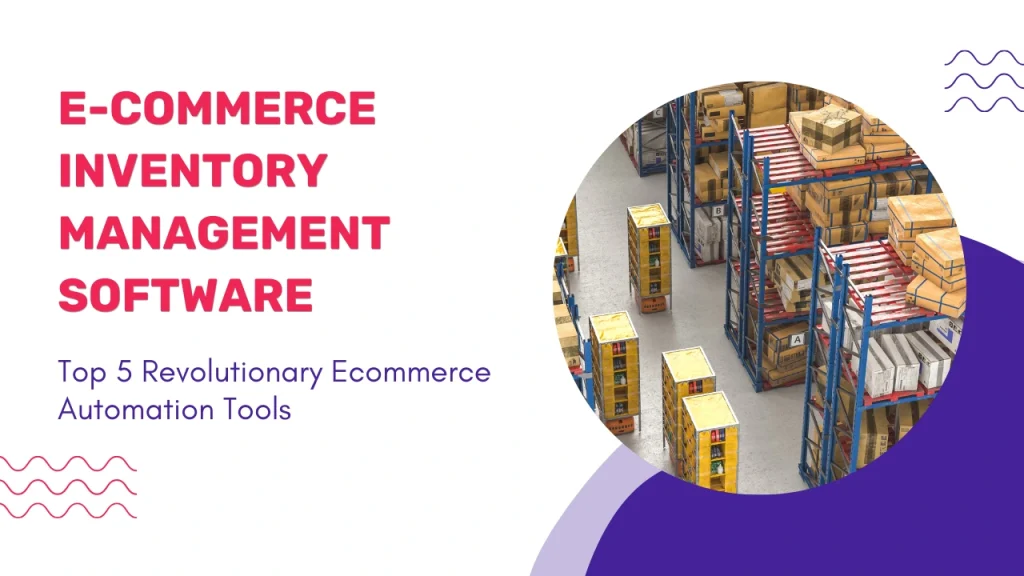Effective inventory management is critical to the success of any eCommerce business. With the right tools in place, like eCommerce inventory management software, you can automate and streamline many processes. However, the key to optimizing your operations lies in knowing which metrics to track. By focusing on the right metrics, you can ensure better decision-making, improve profitability, and enhance the customer experience.
In this article, we’ll explore the key metrics you should be tracking with your eCommerce inventory management software to achieve better results.
1. Stock Turnover Rate
What It Is:
The stock turnover rate measures how often your inventory is sold and replaced within a specific period, typically annually. This metric indicates how efficiently your business is managing inventory and how quickly products are moving off the shelves. A report from TradeGecko found that businesses with an inventory turnover rate of 4 or higher are 30% more likely to see higher revenue growth. This highlights the importance of efficient stock management.
Why It Matters:
A high stock turnover rate means you\’re selling products faster, which can result in lower storage costs and fewer risks of holding unsold goods. On the other hand, a low stock turnover rate may suggest overstocking or weak demand.
How to Track It:
Stock Turnover Rate = Cost of Goods Sold (COGS) / Average Inventory Value
By monitoring this metric, you can make better purchasing decisions and avoid overstocking or understocking.
2. Inventory Accuracy
What It Is:
Inventory accuracy measures how closely your physical stock matches what\’s recorded in your eCommerce inventory management software. This metric is crucial for ensuring accurate stock levels in your eCommerce inventory management system, which directly affects order fulfillment.
Why It Matters:
Inaccurate inventory can lead to stockouts, overstocking, and order delays. Keeping inventory data accurate is essential to prevent issues like customer dissatisfaction or lost sales opportunities.
How to Track It:
Inventory Accuracy = (Recorded Inventory / Actual Inventory) x 100
Use your software’s reporting tools to regularly compare physical stock against what’s recorded, and schedule frequent stock audits to ensure accuracy.
3. Order Fulfillment Rate
What It Is:
Order fulfillment rate tracks the percentage of orders successfully processed and shipped without issues, such as stockouts, delays, or errors, using your eCommerce inventory management software.
Why It Matters:
A high fulfillment rate indicates your inventory and order processing systems are working efficiently. Low fulfillment rates can lead to customer dissatisfaction, returns, and ultimately lost sales.
How to Track It:
Order Fulfillment Rate = (Orders Shipped on Time / Total Orders) x 100
Your eCommerce inventory management software should integrate with your order processing system to provide real-time updates on fulfillment status.
4. Lead Time
What It Is:
Lead time refers to the amount of time it takes for an order to be fulfilled, from when the customer places the order to when it’s shipped. This metric includes procurement, production, and shipping time.
Why It Matters:
A shorter lead time can improve customer satisfaction by ensuring faster delivery, while a long lead time can create frustration and lead to cart abandonment.
How to Track It:
Lead Time = Order Fulfillment Date – Order Placement Date
Regularly monitor your lead time and identify any bottlenecks in your process. Your eCommerce software can track the time taken for each stage of the fulfillment process.
5. Deadstock
What It Is:
Deadstock refers to inventory that is no longer in demand and is sitting unsold in your warehouse. These are products that are not generating sales and can take up valuable storage space.
Why It Matters:
Deadstock ties up capital that could be better invested in products with higher demand. It also increases storage and handling costs. Identifying and reducing deadstock is key to maintaining profitability.
How to Track It:
Use your inventory management software to track product age and sales velocity. You can set thresholds for identifying slow-moving or outdated stock.
6. Stockouts
What It Is:
A stockout occurs when an item that a customer wants to purchase is out of stock. It can result from inaccurate inventory forecasting, poor order management, or an unexpected surge in demand.
Why It Matters:
Stockouts lead to lost sales and customer dissatisfaction. They may also damage your brand’s reputation, as customers who can’t find the products they want may turn to competitors.
How to Track It:
Stockout Rate = (Stockouts / Total Products Sold) x 100
Set up alerts within your eCommerce inventory management software to warn you when stock levels fall below a certain threshold.
7. Inventory Turnover Days
What It Is:
Inventory turnover days is the average number of days it takes to sell your inventory. This metric gives you insight into how long your inventory sits before it’s sold.
Why It Matters:
A shorter turnover time means your inventory is selling faster, leading to higher cash flow. If your turnover days are too high, it could signal overstocking or slow-moving products.
How to Track It:
Inventory Turnover Days = 365 / Inventory Turnover Rate
Keep a close eye on this metric to optimize your stock levels and ensure you’re not holding onto unsellable inventory for too long.
8. Gross Profit Margin
What It Is:
Gross profit margin is the difference between revenue and the cost of goods sold (COGS), expressed as a percentage of revenue. It reflects the profitability of your products before accounting for other expenses.
Why It Matters:
Tracking this metric allows you to assess which products are the most profitable and which ones need to be re-priced, discounted, or replaced. It also helps you identify opportunities for cost reduction.
How to Track It:
Gross Profit Margin = (Revenue – COGS) / Revenue x 100
Monitor this in conjunction with your sales data to ensure your pricing strategy is working effectively.
9. Backorder Rate
What It Is:
The backorder rate measures the percentage of customer orders that cannot be fulfilled immediately due to out-of-stock products.
Why It Matters:
A high backorder rate can signal poor inventory planning or a failure to respond to demand shifts. It can lead to customer frustration and increased operational costs.
How to Track It:
Backorder Rate = (Backordered Items / Total Orders) x 100
By tracking this metric, you can identify stock shortages early and prevent backorders by adjusting stock levels.
10. Carrying Costs of Inventory
What It Is:
Carrying costs include all expenses related to holding inventory, such as storage, insurance, taxes, and depreciation.
Why It Matters:
High carrying costs can quickly eat into your profits. By monitoring these costs, you can determine whether holding excess inventory is worth the investment and adjust accordingly.
How to Track It:
Carrying Costs = (Storage Fees + Insurance + Depreciation) / Total Inventory Value
Your software should help calculate these costs based on your stock levels and turnover rates.
A Seamless Integration for Inventory Updates
One aspect of eCommerce inventory management that many businesses overlook is the impact of returns. Returns can cause major discrepancies in inventory data if not properly accounted for. This is where automated solutions like EcoReturns come in. By integrating EcoReturns with your existing inventory management system, you can automatically update stock levels in real time, ensuring your inventory is always up to date without manual effort. This eliminates discrepancies caused by returns, ensuring a more accurate reflection of available stock and reducing the risk of stockouts or overstocking.
Conclusion
Tracking the right metrics with your eCommerce inventory management software is essential for improving operational efficiency, reducing costs, and enhancing customer satisfaction. By monitoring stock turnover rates, inventory accuracy, fulfillment rates, and other key performance indicators, you can make data-driven decisions that lead to better results. Using tools like EcoReturns to automate inventory updates can also help streamline operations and ensure a more seamless process.
Regularly review these metrics and use them to fine-tune your strategy, ensuring that your inventory management remains agile and responsive to the ever-changing demands of eCommerce.


